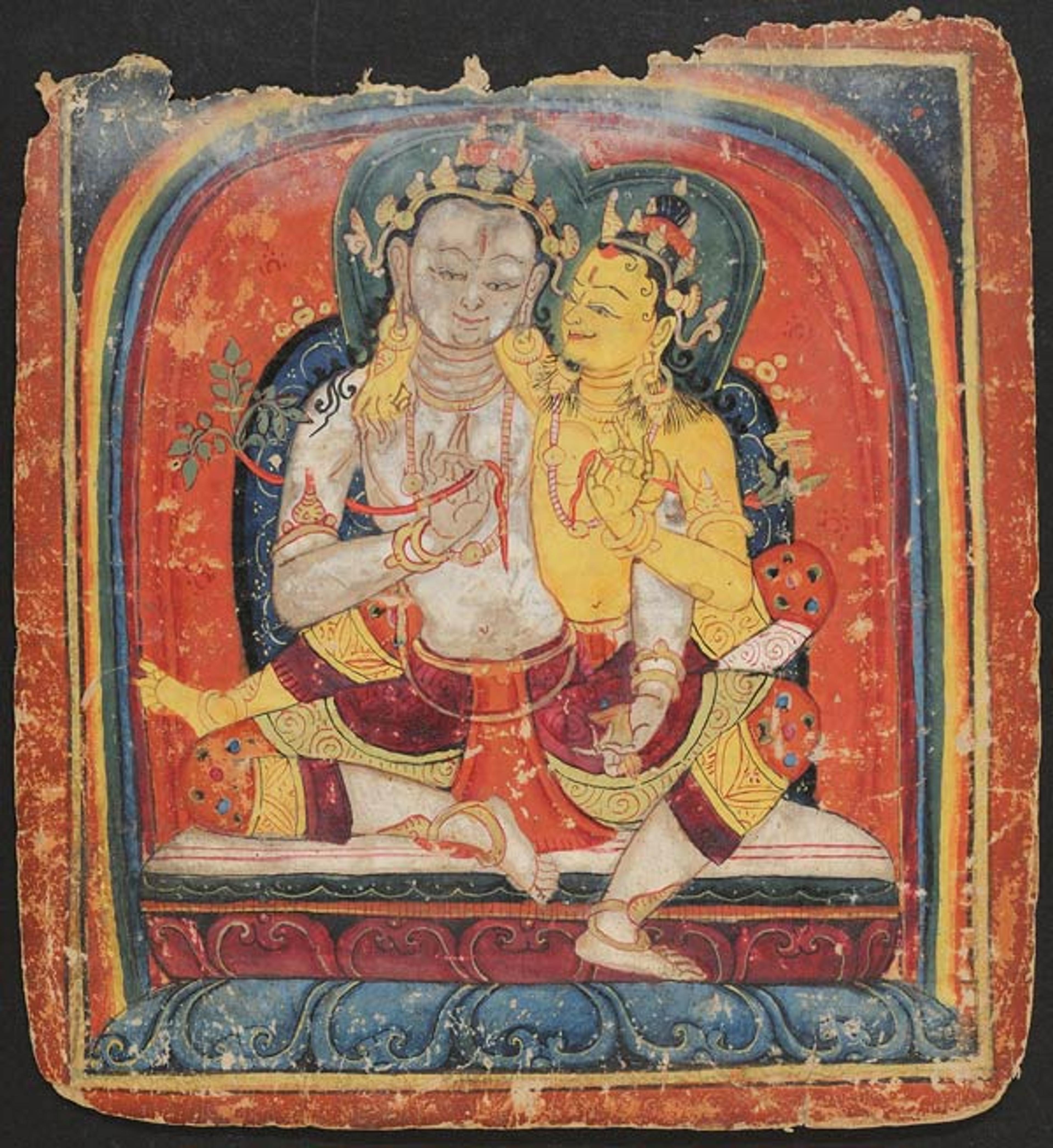
Initiation Card (Tsakali): Maitreya and consort, early 15th century. Tibet. Opaque watercolor on paper. The Metropolitan Museum of Art, New York, Rogers Fund, 2000 (2000.282.10)
In 2000, The Metropolitan Museum of Art acquired a complete set of twenty-five early fifteenth-century Tibetan initiation cards (tsakalis), which are currently on display in the Sacred Traditions of the Himalayas exhibition, on view through June 14, 2015. When these cards were received, the majority of them showed noteworthy damage which was most easily visible along the top edges of the cards. Under microscopic examination, however, it became apparent that the delicate paint layer—composed primarily of natural pigments in a natural gum binder—was also markedly damaged and, in some areas, detaching from the paper support. In the magnified image shown below, the fibrous paper support can be seen under the cracked and lifting paint layer.
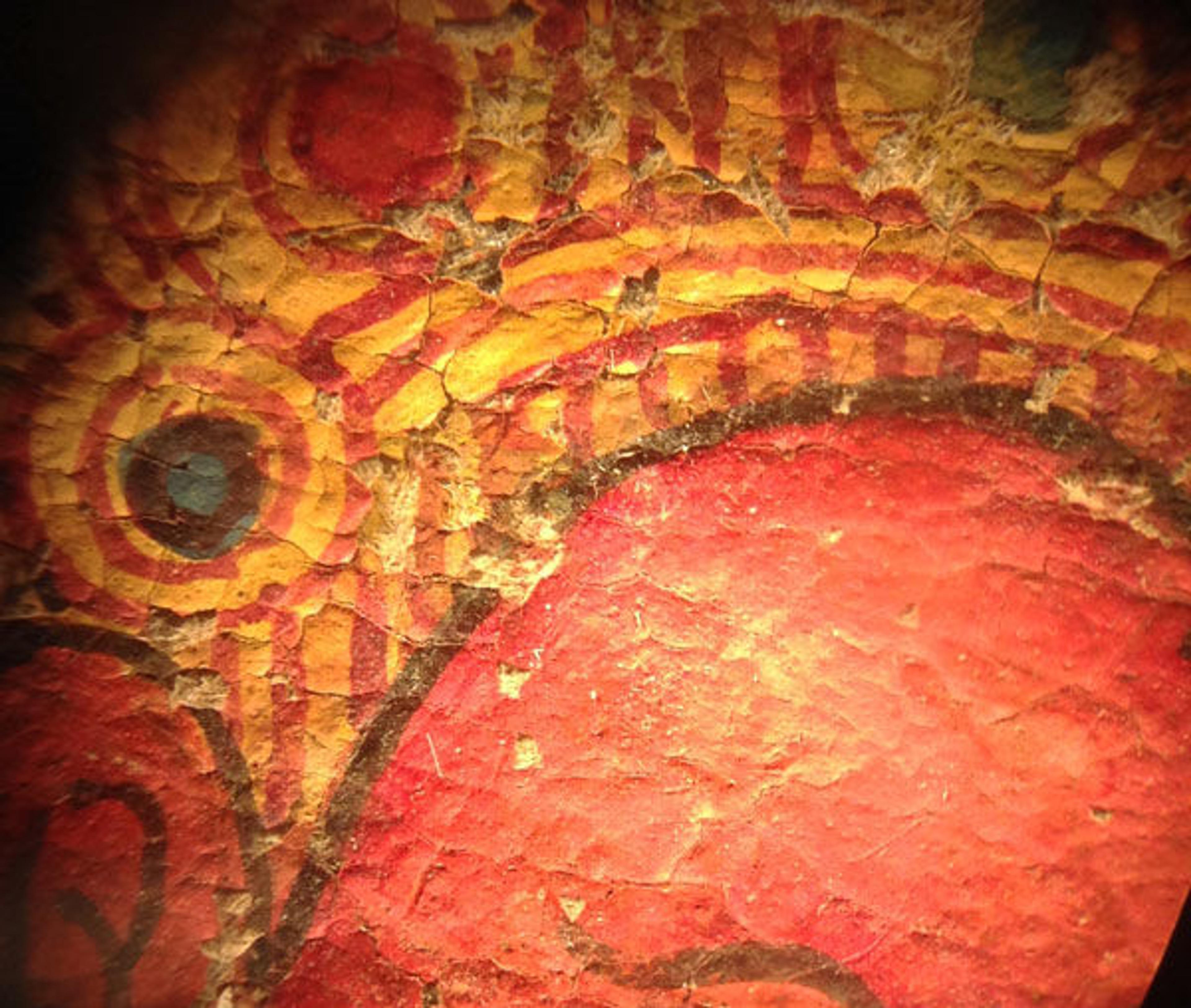
Magnification of 2000.282.16, showing the cracked paper support and lifting paint layer
Before any in-depth treatment could be carried out in order to display these objects, the paint layer required stabilization. In an effort to do this, several organic consolidants were considered for readhering the paint layer to the paper surface—including natural gelatin, which tends to be glossy; funori, a matte adhesive made from seaweed; and isinglass, a less-glossy-but-not-fully-matte consolidant made from the bladder of a sturgeon fish. Organic adhesives are frequently chosen over synthetic adhesives for this type of media consolidation, since their chemical and physical properties complement and support the original materials used in the object.
Isinglass was ultimately selected for both its adhesive qualities and sheen characteristics. This consolidant is prepared by boiling desiccated sturgeon bladder, straining the resulting solution to remove any residual inclusions, and pouring out hundreds of droplets of the material onto non-stick Mylar.
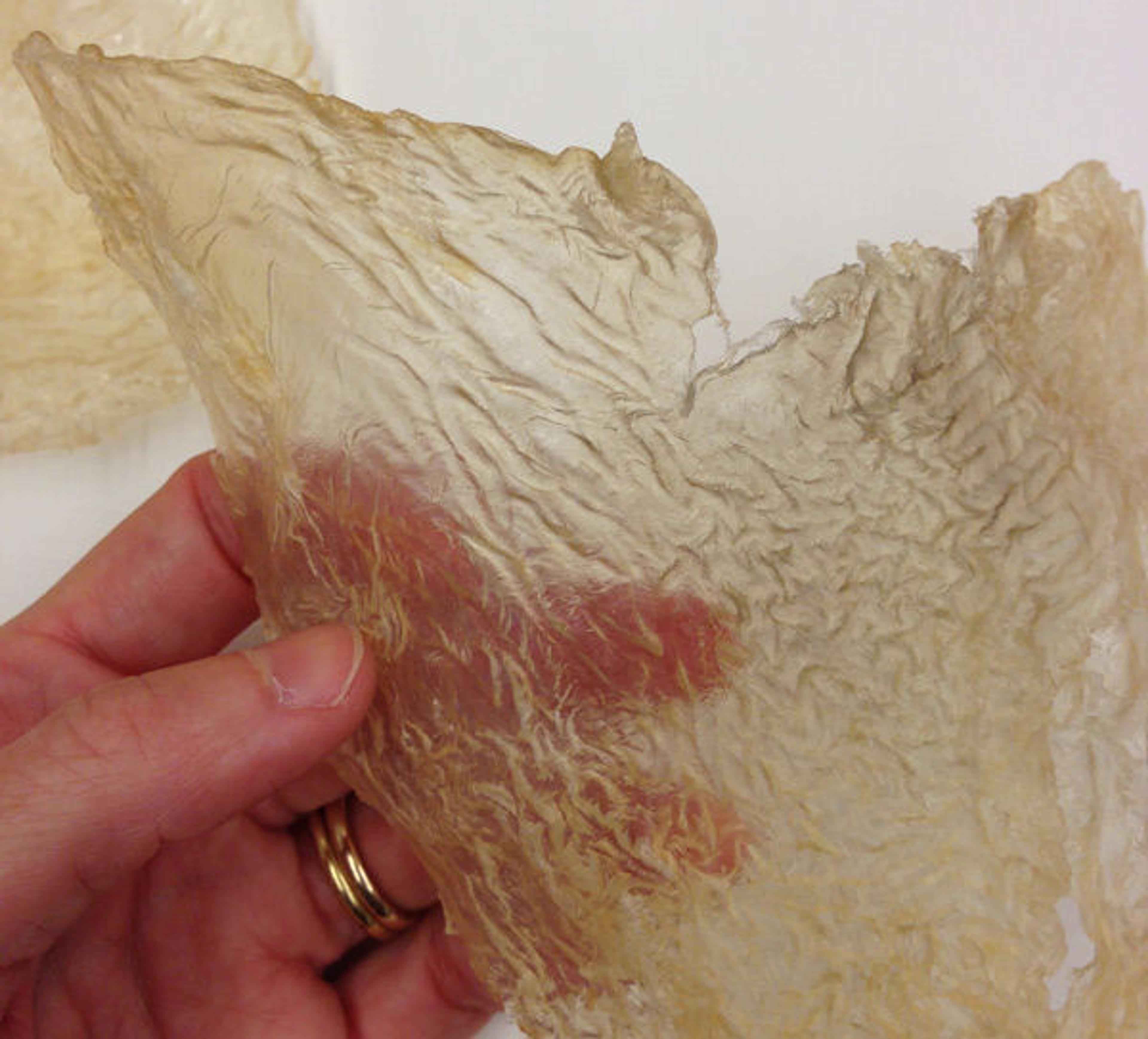
Desiccated sturgeon bladder

Droplets of isinglass in solution
The droplets are allowed to air-dry for several days, and what remains are thin, circular sheets of consolidant measuring approximately 1 1/2 to 2 inches in diameter.
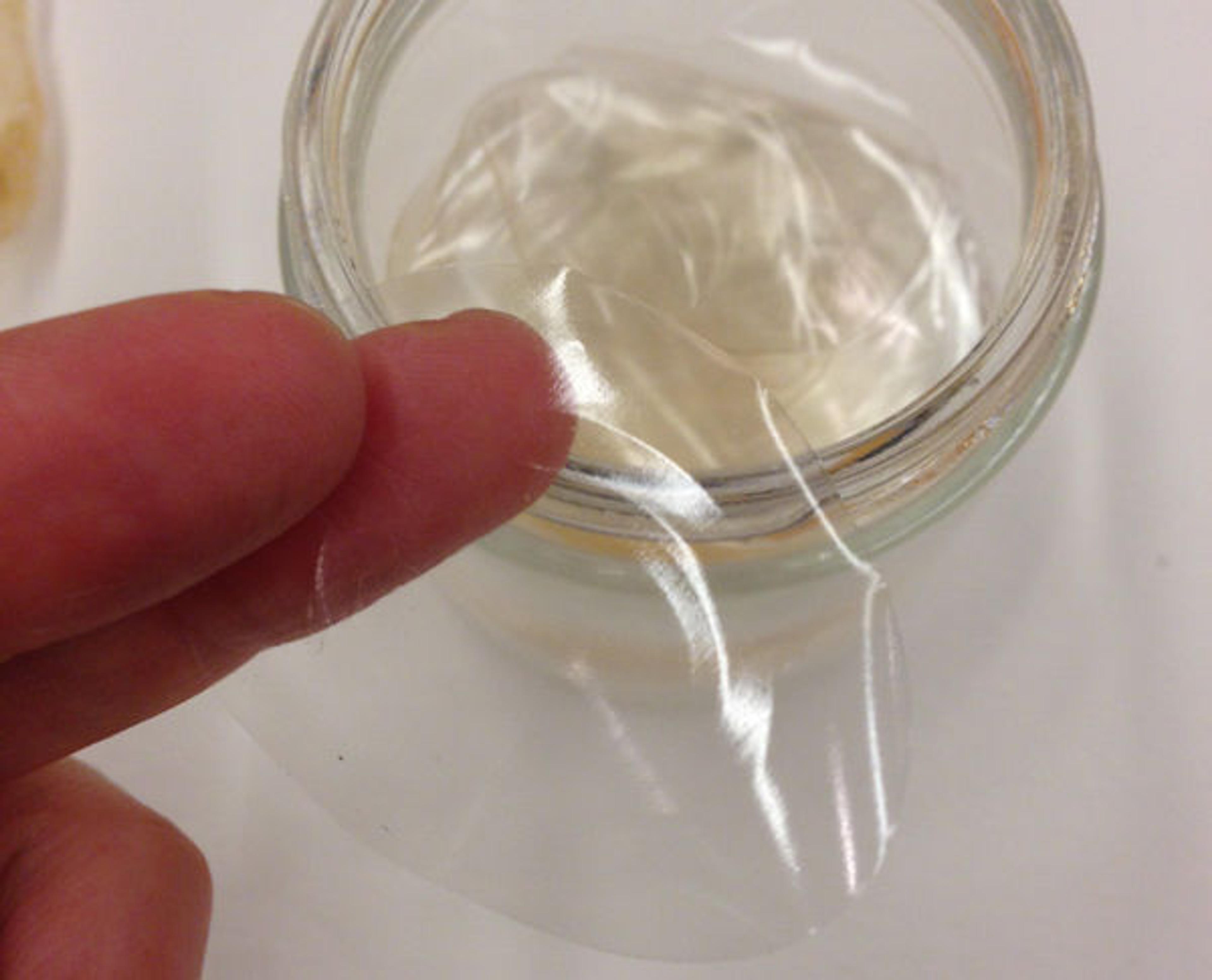
Isinglass sheets after drying period
In small, controlled amounts, this adhesive material is reconstituted into solution (dissolved into water) and applied under the lifting paint surface with a very fine brush in order to readhere the detached areas of paint to the surface of the paper support. Often, as can be seen in the short video below, ethanol is applied to the paint surface immediately prior to an application of isinglass. On a microscopic scale, ethanol reduces the surface tension of the adhesive solution and allows it to slip easily between the paint layer and the paper support. The ethanol is applied with a separate brush in order to prevent extended contact with the consolidant, which will cause denaturation of the isinglass protein and therefore reduce its adhesive properties. Once the isinglass permeates the area beneath the paint layer and is allowed to dry, the lifting flakes are readhered to the paper surface and the object is considered safe for further treatment and for display.
After the paint layers of all twenty-five cards had been stabilized, the damaged surface was gently cleaned and the structural losses were repaired and filled (a process which will be discussed in next week's blog post). Even after treatment, though, much of the wear intentionally remains visible; this is to inform the viewer of the cards' history and use. Once treatment is complete, the stabilized paint layers and repairs are documented and the cards are brought to the gallery for exhibition.
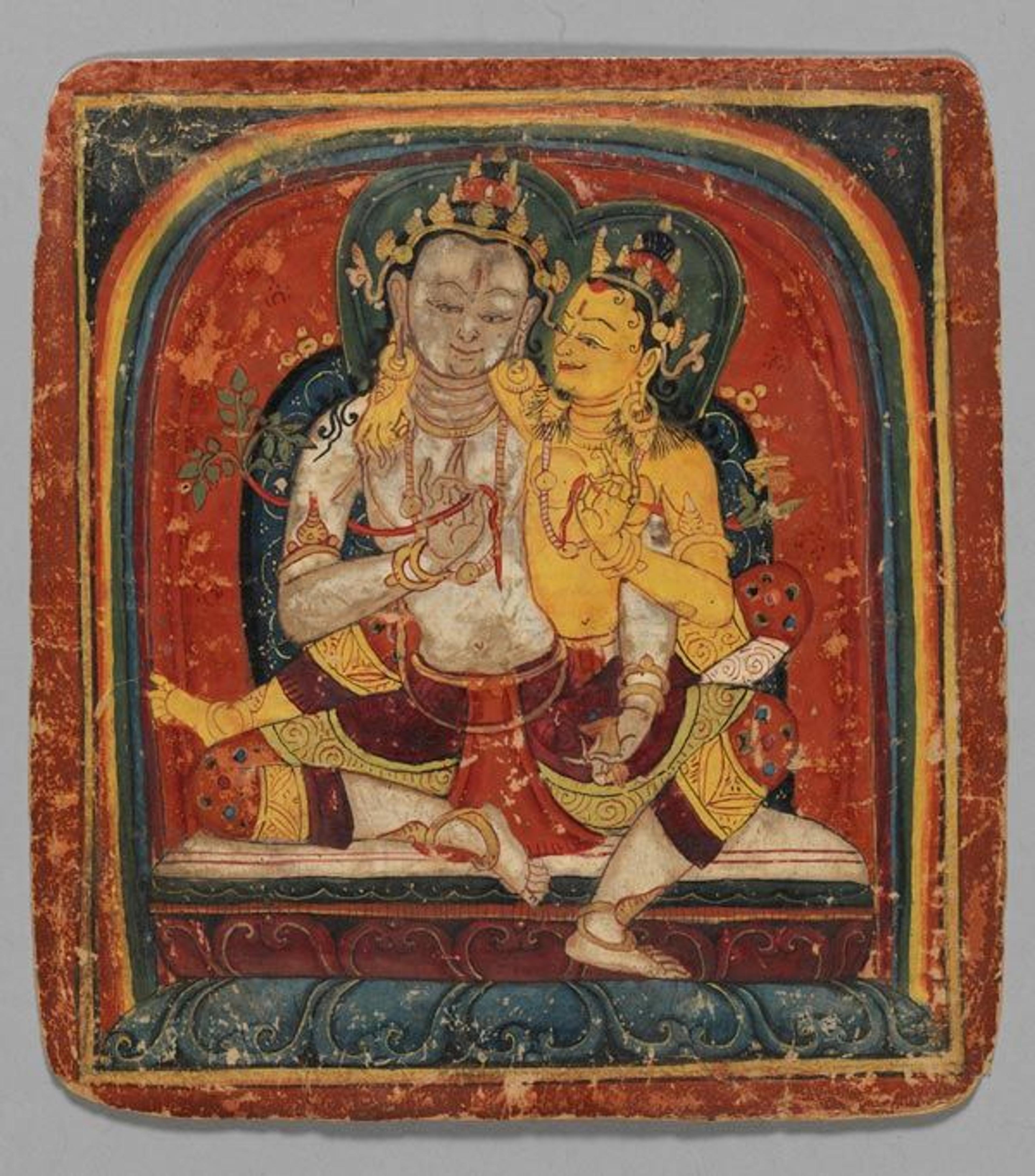
2000.282.10, as photographed after treatment
View all blog articles related to Sacred Traditions of the Himalayas.